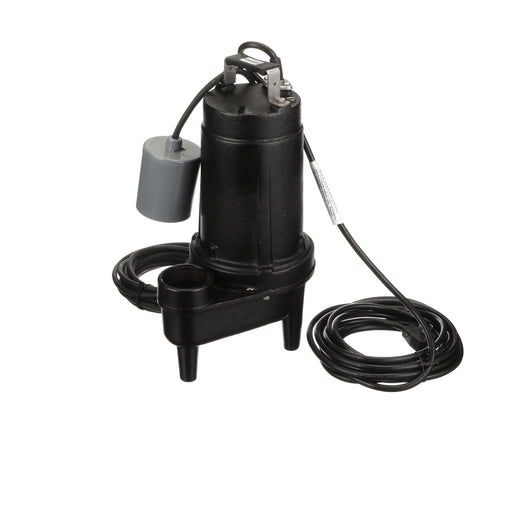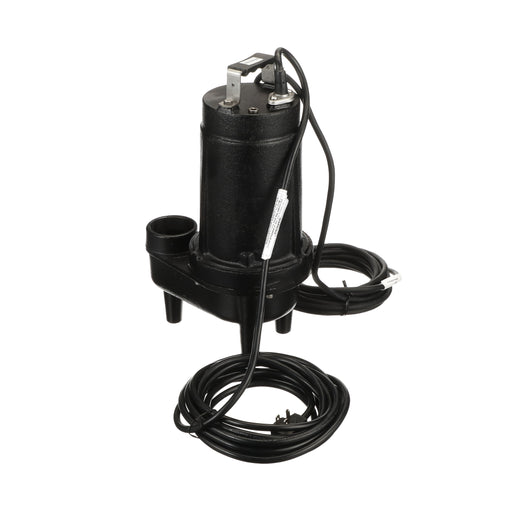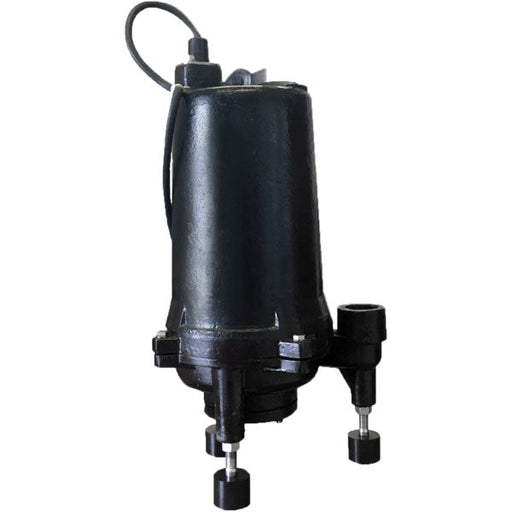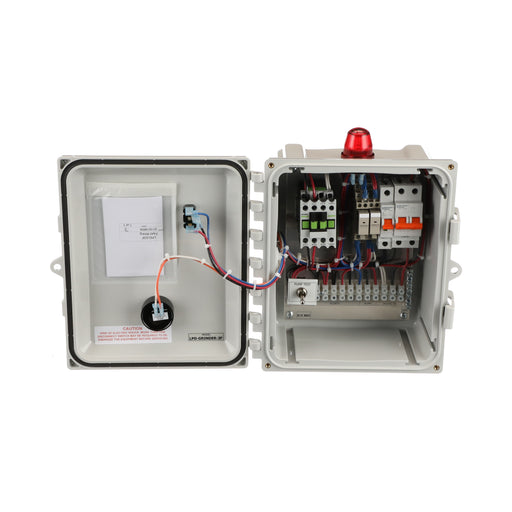The Ultimate Guide to Sump Pumps for Basements: Protecting Your Home from Water Damage
A sump pump may not be the fanciest feature of your home, but if you have a basement, it’s certainly one of the most important tools to keep your house protected from water damage. Basements have a reputation for flooding and being excessively damp for many reasons, especially in areas with higher than average rainfall or high water tables. A high-quality sump pump can be your first line of defense when it comes to ensuring your basement stays dry and any repair costs are reduced or eliminated.
Throughout this comprehensive guide, we’ll be going over everything you need to know about sump pumps for basements, how they work, the different sump pump models available, how to select the right sump pump for your basement, and how to properly maintain your sump pump. By the end of this guide, you should be able to make informed decisions when it comes to installing or upgrading a sump pump in your home. Enjoy!
What is a Sump Pump?
A sump pump is a device which is designed to remove water from a sump basin. A sump basin is a pit located within your basement or crawl space. A sump basin collects water from drainage pipes, groundwater seepage, or even flooding. When the water level in the sump basin rises to a certain level, the sump pump will automatically activate and begin to pump water out and away from your home. This process helps to prevent water accumulation or flooding within your home and drive water away from the foundation.
While sump pumps are most commonly found in basements, they can also be installed in crawl spaces or other low-lying areas prone to water accumulation. While sump pumps are most commonly located within basements, they can also be found within crawl spaces and other areas with a low-lying location prone to water accumulation and flooding.
Why Is a Sump Pump Necessary for Your Basement?
Prevents Basement Flooding
Basement flooding can be an absolute nightmare to deal with. Basement flooding may be caused by everything from heavy rain, to snowmelt, or even a higher than average water table. Regardless of the source of flooding, it’s important to protect your home from flooding, as the costs to remediate and repair damages could become astronomical very quickly. A sump pump within your basement can provide a reliable way to remove any excess water before it becomes a much larger issue.
Protects Your Foundation
Protecting the foundation of your home is crucial when it comes to maintaining structural integrity. Repeated flooding and water damage can cause your home’s foundation to crack, rot, mold, and decay. A sump pump for your basement can be the protecting force you need to maintain your foundation’s integrity for many years to come.
Reduces Development of Mold & Mildew
A damp basement will eventually develop mold and mildew, which can then generate serious health risks. Black mold can develop after even one incident of water leakage or flooding. Black mold exposure may cause serious health effects over time, some of which may be permanent. A sump pump for your basement helps keep your basement dry, reducing the overall risk of mold and mildew growth and also improving the air quality within your basement area.
Enhances Property Value
Homes which are already equipped with sump pumps in their basements will likely have a slight increase in property value, as the system is already installed, ready to go, and will have protected your home’s basement from flooding or water accumulation. This is something to keep in mind when installing a sump pump and if you plan to sell your home in the future.
How Does a Sump Pump Work?
The operation of a sump pump is straightforward but effective. Here’s how it works:
Water Collection: Water will flow into the sump pump basin through a perimeter drain, foundation seepage, or natural groundwater movement.
Activation: As the water level reaches a predetermined point within the basin, a float switch or pressure sensor activates the sump pump automatically.
Pumping: The sump pump’s motor drives an impeller, which forces the water up and out of the basin and into a discharge pipe.
Discharge: The water is then directed away from your home, in most cases to a storm drain, a dry well, or a designated drainage area.
Types of Sump Pumps
Sump pumps come in various designs, each tailored to specific needs and budgetary constraints. Here’s an overview of the most common types of sump pumps:
Submersible Sump Pumps
A submersible sump pump will be installed in the sump basin, fully submerged in the water. These types of pumps are compact in size, efficient in performance, and operate very quietly:
- Best For: Homes with limited space in the basement or where noise is a concern
- Positives: Quiet operation, space-saving design, efficient water removal
- Negatives: More expensive and harder to access for maintenance
P/N: CHA-SEW-F051205
Key Features
Specs
Warranty
Being able to power through challenging waste management tasks with ease is achievable with the Ater ½ HP Solids...
Key Features
Specs
Warranty
The Ater 1012A 1HP single seal grinder Pump a single phase grinder pump designed with size and electrical capabi...
Key Features
Specs
Warranty
Documentation
The pump operates on demand with a three float set up. The three floats are On float, Off float and ...Products
Pedestal Sump Pumps
A pedestal sump pump will have a motor mounted above the sump basin, with a pipe extending into the pit to withdraw water in an efficient manner
- Best For: Basements with smaller sump basins or tight budgets
- Positives: Cost-effective, easy to maintain, longer lifespan
- Negatives: Noisier than submersible pumps and less visually appealing
Battery Backup Sump Pumps
A battery backup sump pump is a secondary sump pump which will turn on in the event of a power outage or if the primary pump fails. It’s often installed as a failsafe backup for these types of events:
- Best For: Homes in areas prone to power outages or heavy rainfall
- Positives: Provides peace of mind during emergencies
- Negatives: Requires regular battery maintenance
Combination Sump Pumps
A combination sump pump will include a primary pump and secondary pump with a battery backup unit, offering what some may consider a true all-in-one solution:
- Best For: Homeowners seeking maximum protection against flooding
- Positives: Comprehensive protection, compact design
- Negatives: Higher upfront cost
Water-Powered Sump Pumps
A water-powered sump pump utilizes the pressure from your home’s water supply to pump out the water itself; eliminating the need for electricity or batteries:
- Best For: Homes with reliable municipal water pressure
- Positives: No battery or electricity required, low maintenance
- Negatives: Inefficient for high-volume water removal and not suitable for homes with well water
How to Choose the Right Sump Pump for Your Basement
Selecting the right sump pump depends on a multitude factors:
Pump Capacity
You’ll always want to consider the pump’s GPH (gallons per hour) or GPM (gallons per minute) rating, as this will indicate its performance capacity. Higher ratings indicate faster wastewater removal, while lower ratings indicate slower wastewater removal.For areas with heavier than normal rainfall or larger basements, you’ll want to choose a high GPH or GPM rated sump pump.
Material & Durability
You should try to select sump pumps constructed of higher-quality materials, such as cast iron or stainless steel, as these styles of sump pump will typically last much longer due to their inherent durability when compared to more affordable plastic sump pumps options.
Power Source
If you reside in an area prone to power outages, you'll certainly want to consider a sump pump which has a secondary battery backup solution or a water-powered sump pump which is not reliant on electricity. You’ll also want to ensure your sump pump has the right level for thermal protection to prevent overheating from occurring.
Float Switch Type
A vertical float switch is best for smaller pump basins. A tethered float switch is ideal for larger basins with additional room for the switch itself to operate.
Noise Levels
If you're searching for a quieter sump pump, you’ll want to consider a submersible sump pump, as they'll be much quieter in most cases when compared to the pedestal sump pumps.
Discharge System
The discharge pipe should be directing wastewater at least 20+ feet away from your home's foundation, as this will ensure there’s little risk of water flowing back into your basement area. You’ll also want to consider adding a check valve to prevent water from flowing back into the sump basin.
Maintaining Your Sump Pump
Regular maintenance is key to keeping your sump pump in top working condition. Here are some helpful tips:
Test Your Pump Regularly
By pouring water into the sump basin, you’ll be able to test whether or not the pump activates and removes water in the efficient manner in which it was designed to do so.
Clean the Pump & Basin
By removing debris, sludge, and dirt from the sump basin, you’ll be proactively preventing clogs. Routinely cleaning the pump’s intake screen will help maintain optimal performance.
Inspect the Discharge Pipe
Proactively check the discharge pipe for any cracks, leaks, or clogs. By ensuring the discharge pipe is free of any obstructions, you’ll be able to rest easy knowing water is being properly directed away from your home.
Replace the Battery
Replace the battery for your backup pump every two to three years, or as recommended by the manufacturer. This will help prevent failure of the battery-operated backup pump.
Schedule Professional Maintenance
You’ll want to have your sump pump inspected by a professional annually to identify any potential issues early on.
Signs You Need to Replace Your Sump Pump
Even with the most proactive forms of maintenance, sump pumps will eventually fail. The average lifespan of a sump pump is typically around seven to ten years. Below are some of the most common signs indicating it's time to replace your sump pump or other related components:
Frequent Cycling: The pump turns on and off too often, even without much water in the basin
Unusual Noises: Grinding, rattling, or whining sounds during operation
Rust & Corrosion: Visible damage on the pump body
Failure to Activate: The pump doesn’t turn on when the water level rises
Cost of a Sump Pump System
The cost of a sump pump will vary depending on the type of sump pump and installation requirements:
Pedestal Sump Pumps: $100–$200
Submersible Sump Pumps: $150–$500
Battery Backup Systems: $200–$600
Combination Sump Pumps: $400–$1,000
Water-Powered Sump Pumps: $200–$500
Professional Installation: $500–$2,000, depending on the complexity of the installation and your local labor rates
While the upfront cost may seem significant, investing in a high-quality sump pump system can save you thousands of dollars in potential water damage repairs.
Benefits of Installing a Sump Pump in Your Basement
Improved Air Quality
By keeping your basement dry, a sump pump reduces the risk of mold, mildew, and dampness that can compromise indoor air quality. By ensuring your basement is kept dry throughout the entire year, you’ll likely find there’s a greatly reduced risk of mold, mildew, and dampness which can ultimately compromise indoor air quality and lead to toxic levels of black mold developing over time.
Safeguarding Personal Belongings
As most people use their basements to store away personal belongings, It is important to have those belongings protected from water damage. A properly functioning sump pump for your basement can offer this protection.
Preventing Structural Damage
If your home’s foundation becomes compromised by water damage, it’s likely never going to be the same again. With a high-quality sump pump for your basement, you can avoid having issues developed which are caused by soil erosion or water pooling.
Added Value to Your Home
As previously mentioned, homes with a full sump pump water management system may be an attractive feature to include when selling your home, especially in areas prone to flooding.
Common Issues with Sump Pumps & How to Fix Them
Pump Fails to Turn On
Cause: A stuck float switch, power outage, or electrical problem
Solution: Check the power source, test the float switch, and reset the circuit breaker if necessary
Pump Runs Constantly
Cause: A stuck float switch, a pump that’s too small for the basin, or continuous water flow
Solution: Replace or adjust the float switch and ensure the pump is sized correctly for your needs
Loud or Unusual Noises
Cause: Debris in the pump, worn-out bearings, or loose components
Solution: Clean the pump intake surface, replace pump if unusual noises persist (You don't want your pump to fail when it’s needed. Better to swap it out ahead of time)
Discharge Pipe Freezes
Cause: Cold weather causing water in the discharge pipe to freeze
Solution: Insulate the pipe or install a freeze guard to prevent ice blockages
Future-Proofing Your Basement with a Sump Pump
As weather patterns have become more and more unpredictable over the past few decades, the importance of having a reliable sump pump cannot be stated enough. Let’s ensure your basement remains protected by following these recommendations:
Invest in Quality: Choose a durable, high-capacity sump pump that can handle heavy water flow.
Add a Backup System: Power outages during storms are common, so a battery backup or water-powered pump is essential for uninterrupted operation.
Monitor Performance: Consider installing a sump pump alarm or smart monitoring system to alert you of potential issues.
Choose Wholesale Septic Supply for Your Sump Pump for Basement
A sump pump for your basement is a critical component to ensure safety, health, and protection of one of your most important investments: your home. Now that you have a greater understanding of how sump pumps work, you can choose the right sump pump for your basement's needs. By maintaining your sump pump properly, you can ensure your home’s basement will stay dry, secure, safe, and sound for many years to come. Protecting against water damage leading to mold and loss of structural integrity is paramount to providing your entire home with the right level of soundness and stability from its foundation. Without this protection a sump pump for your basement provides, you run the risk of having a compromised home should a catastrophic flooding or water damage event unfold. Don’t wait until it’s too late. Take action today to proactively safeguard your home. If you have any questions about sump pumps for your basement or need help selecting the right one for your unique needs and specifications; contact us. We’ll be here to help you determine which sump pump is right for you and your home.









Leave a comment